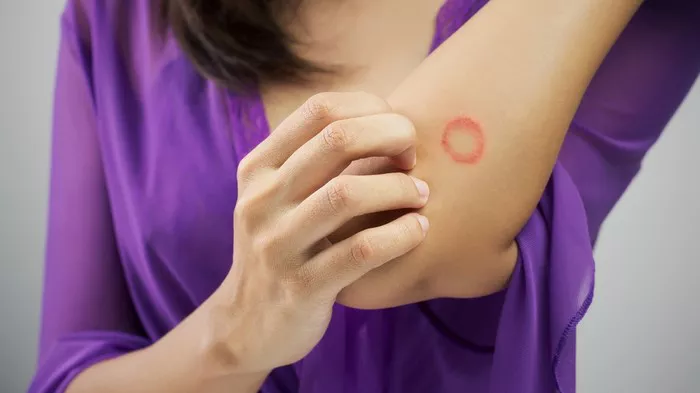Ringworm, despite its name, is not caused by worms at all. Instead, it’s a fungal infection that affects the skin, presenting as red, circular patches that resemble rings. This distinctive shape raises an intriguing question: why is ringworm round?
To understand this phenomenon, we must delve into the biology of the fungi responsible for ringworm and the way it interacts with the skin. Let’s explore the factors that contribute to the circular appearance of this common skin condition.
Understanding the Fungal Culprit
The fungi responsible for ringworm belong to a group called dermatophytes. These fungi thrive on keratin, a protein found in the skin, hair, and nails. When dermatophytes infect the skin, they start to multiply and trigger an immune response, leading to inflammation and characteristic symptoms like itching and redness.
The Circular Pattern: Growth and Spread
The circular shape of ringworm lesions is primarily due to the growth pattern of the fungi. When a dermatophyte colony establishes itself on the skin, it begins to spread outwards. The fungi release enzymes that break down keratin, allowing them to penetrate deeper into the skin tissue. As the colony expands, it forms a circular boundary.
The reason for this outward growth can be attributed to the way fungi acquire nutrients and proliferate. Fungi grow by extending hyphae, which are thin, thread-like structures that branch outwards in search of nutrients. This radial growth pattern is akin to the spokes of a wheel emanating from a central hub. As the fungi grow, the outer edge of the colony expands uniformly, resulting in the characteristic ring shape.
Interactions with Skin Anatomy
The circular nature of ringworm is also influenced by the structure of the skin itself. The fungi prefer warm, moist environments, and they tend to thrive in areas where the skin is relatively thin, such as on the torso, limbs, or scalp. When dermatophytes infect the skin, they spread across the surface, encountering natural barriers like hair follicles and blood vessels.
The interaction between the fungi and these anatomical features contributes to the formation of a circular lesion. As the fungi encounter resistance from hair follicles or blood vessels, they divert their growth along the path of least resistance, resulting in a rounded edge.
Immune Response and Boundary Formation
The immune response of the body also plays a role in shaping the ringworm lesion. As the fungi invade the skin, the body’s immune system launches a defense, attempting to contain the infection. This immune reaction can create a distinct boundary around the infected area, contributing to the circular appearance.
Inflammation caused by the immune response can further delineate the outer edge of the lesion, accentuating its circular shape. The combination of fungal growth and immune-mediated inflammation thus produces the characteristic ring-like appearance of ringworm.
Diagnostic Significance
The circular nature of ringworm is not merely a curious anatomical phenomenon; it also serves as a diagnostic clue for healthcare providers. The distinctive appearance of ring-shaped lesions helps differentiate fungal infections like ringworm from other skin conditions, such as eczema or psoriasis, which may present differently.
Healthcare professionals often rely on visual examination to diagnose ringworm, supplemented by techniques like skin scraping for microscopic analysis. The circular morphology guides treatment decisions, ensuring prompt and effective management of the infection.
Treatment and Prevention
The round shape of ringworm lesions underscores the importance of early detection and treatment. Antifungal medications are typically used to eradicate the infection, targeting the dermatophytes responsible for the symptoms. Topical creams or oral medications may be prescribed depending on the severity and location of the infection.
Preventive measures include practicing good hygiene, avoiding sharing personal items like towels or clothing, and minimizing skin-to-skin contact with infected individuals. Prompt treatment not only alleviates symptoms but also reduces the risk of spreading the infection to others.
Conclusion
In conclusion, the round shape of ringworm is a consequence of the growth pattern of dermatophyte fungi on the skin, influenced by the body’s immune response and anatomical features. Understanding the factors contributing to the circular appearance of ringworm enhances our ability to diagnose, treat, and prevent this common fungal infection effectively.
Despite its innocuous name, ringworm warrants prompt attention and treatment to prevent complications and minimize transmission. By unraveling the mysteries behind its circular shape, we gain valuable insights into the fascinating world of dermatophyte fungi and their interactions with the human skin.
Related Topics:
Does Ringworm Burn When Treated

























